
The compounds (I) and (J) are respectively:




The correct Answer is:d
RX in (I) with o−CN gives R−C≡N, while RX in (II) with CNo− gives R−⊕N≡o−C
(For explaination see solved Example 11.10)
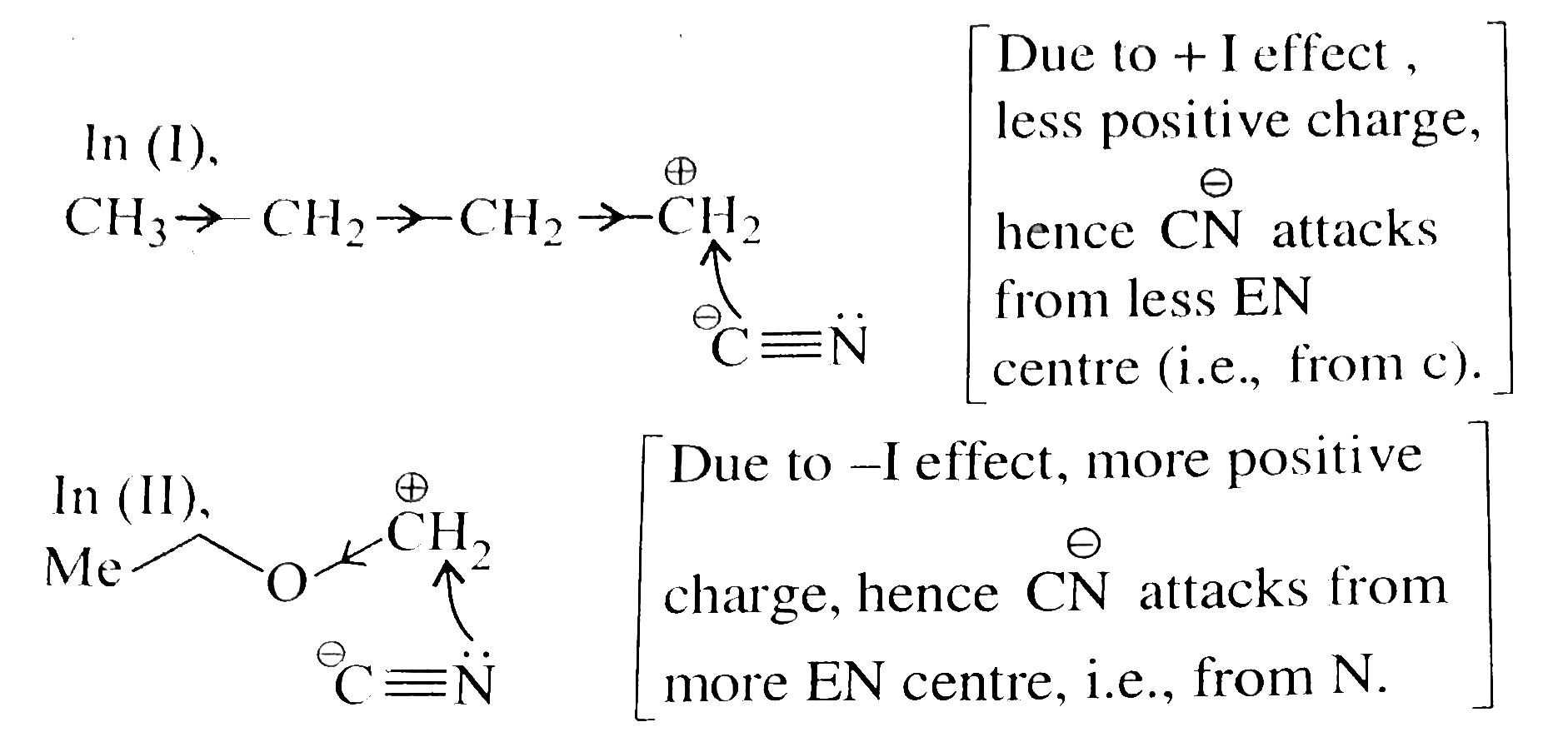
Reactions are:
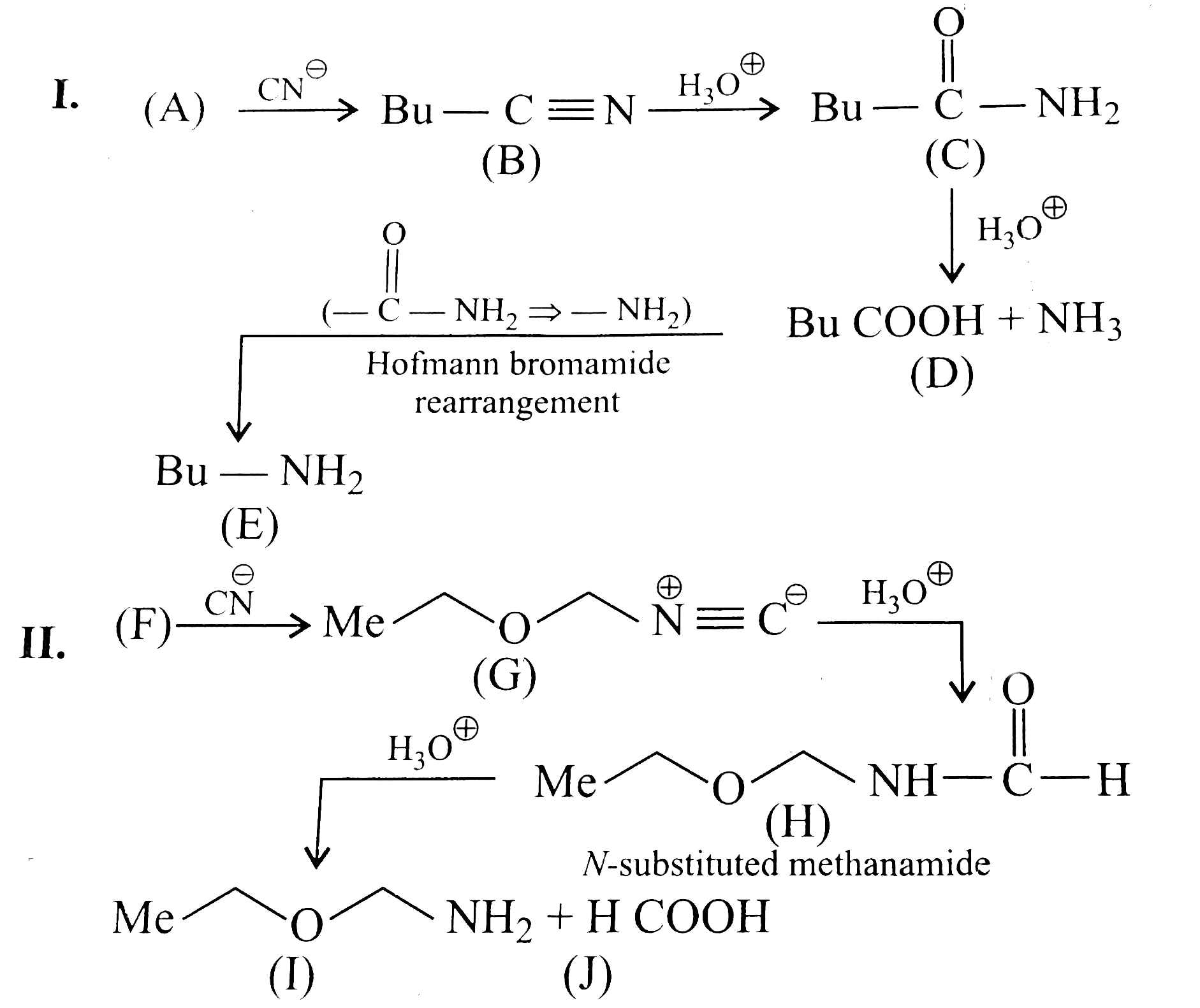
Topper's Solved these Questions
- AROMATIC COMPOUNDS AND ALKYL AND ARYL HALIDES BOOK - CENGAGE CHEMISTRYCHAPTER - AROMATIC COMPOUNDS AND ALKYL AND ARYL HALIDES EXERCISE - Exercises Multiple Correct
35 Videos
- AROMATIC COMPOUNDS AND ALKYL AND ARYL HALIDES BOOK - CENGAGE CHEMISTRYCHAPTER - AROMATIC COMPOUNDS AND ALKYL AND ARYL HALIDES EXERCISE - Exercises Multiple Correct Answers Type
12 Videos
- AROMATIC COMPOUNDS AND ALKYL AND ARYL HALIDES BOOK - CENGAGE CHEMISTRYCHAPTER - AROMATIC COMPOUNDS AND ALKYL AND ARYL HALIDES EXERCISE - Exercises Linked Compreshension Type
11 Videos
- APPENDIX INORGANIC VOLUME 2BOOK - CENGAGE CHEMISTRYCHAPTER - APPENDIX INORGANIC VOLUME 2EXERCISE - Short Answer Type
179 Videos
- BIOMOLECULESBOOK - CENGAGE CHEMISTRYCHAPTER - BIOMOLECULESEXERCISE - Exercises Archives (Analytical And Descriptive)
8 Videos
Similar Questions
In the following reaction sequence, products I, J, and L are formed. K represents a reagent.
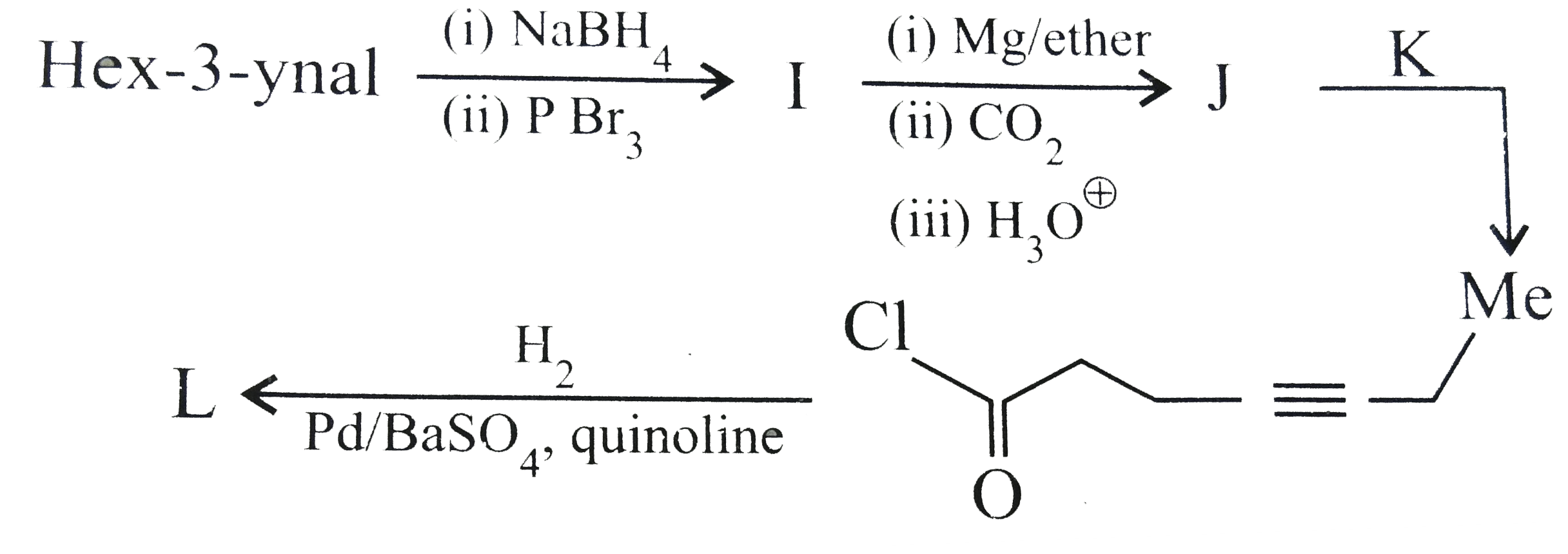
The structures of product I is :

The structures of compounds J and K, respectively, are :
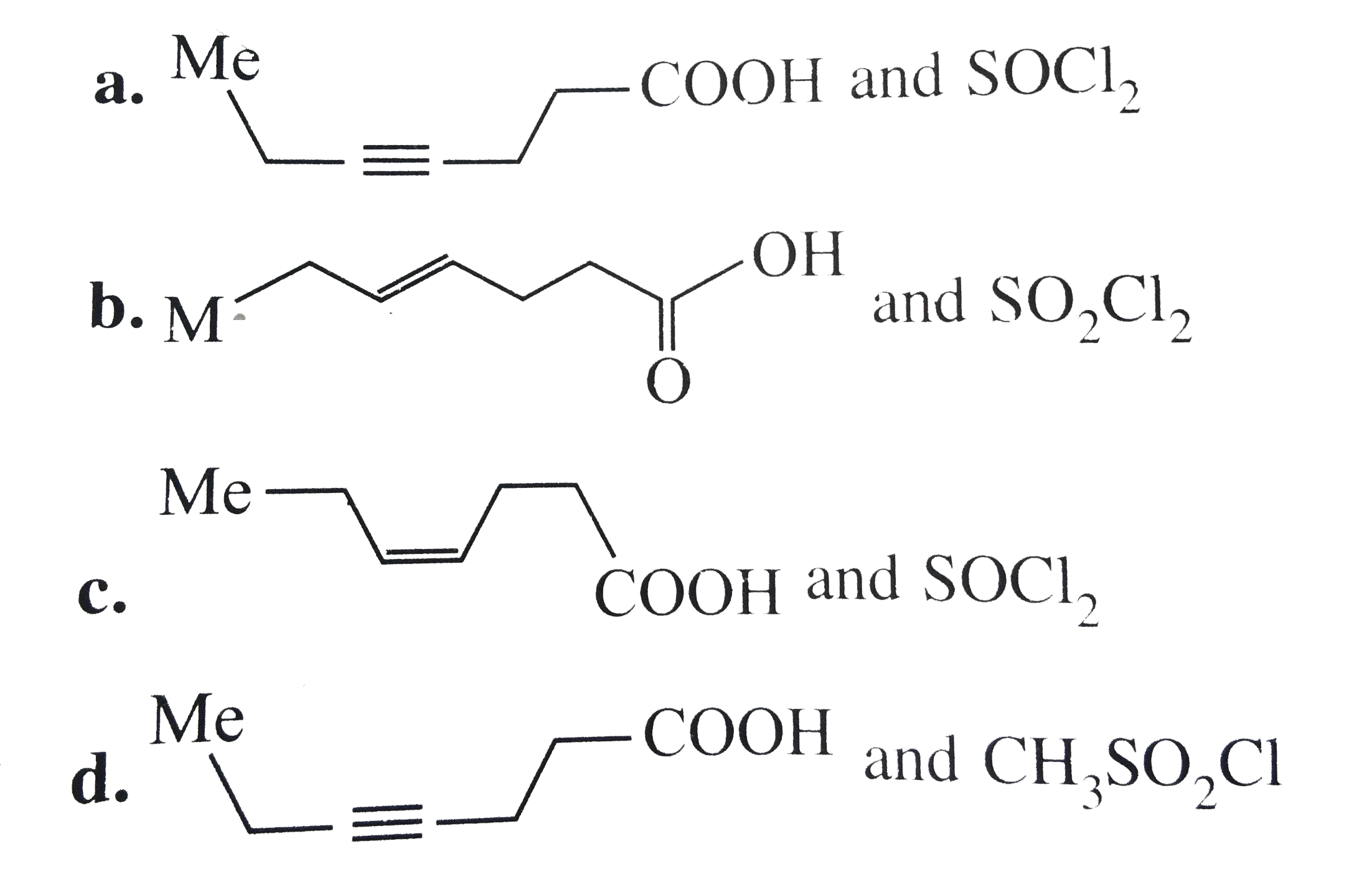
The structure of product L is :
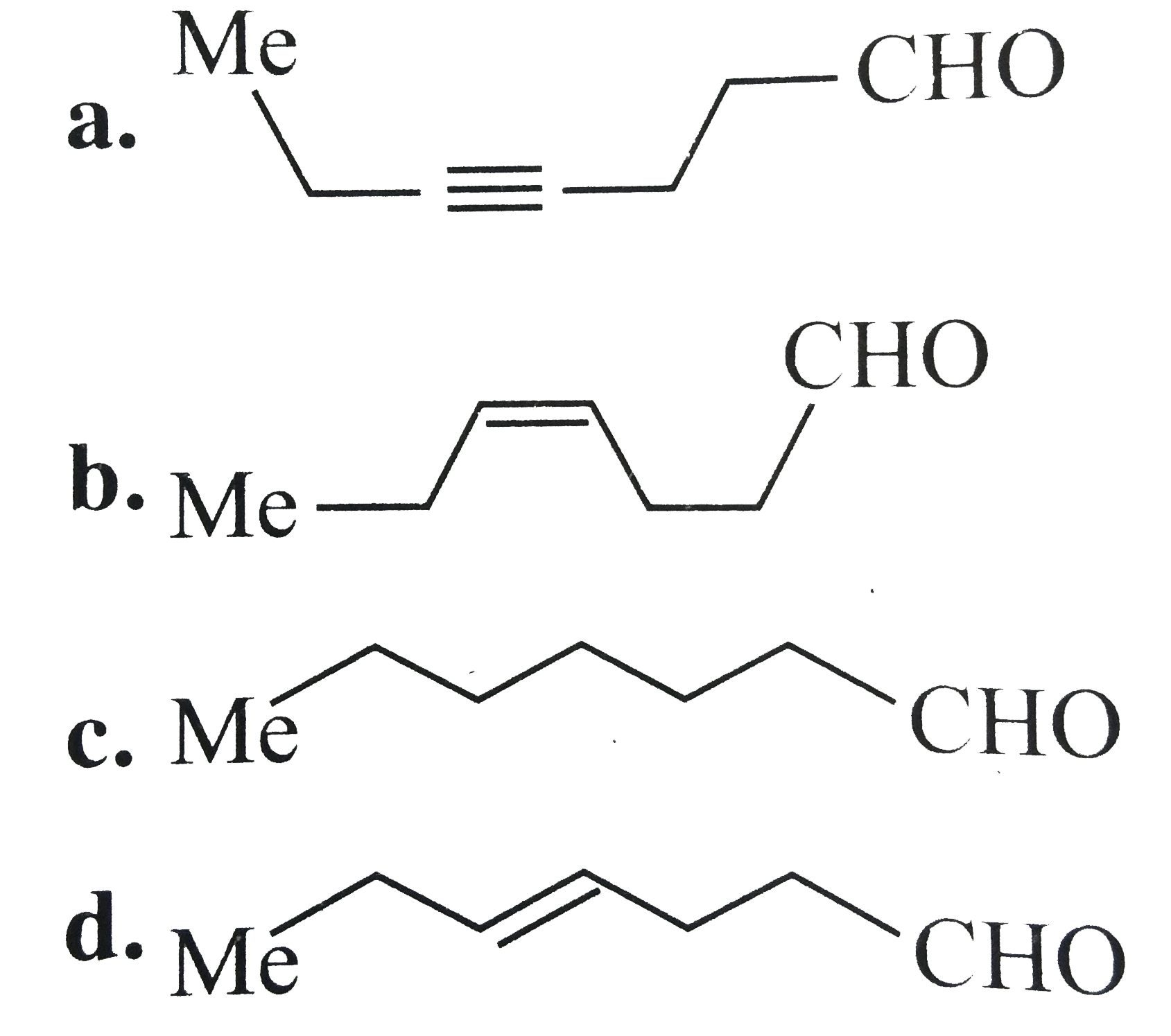
View SolutionIf ˆiandˆj are unit vectors along X- and Y-axis respectively, then what is the magnitude and direction of ˆi+ˆjandˆi−ˆj ?
View Solution
Knowledge Check
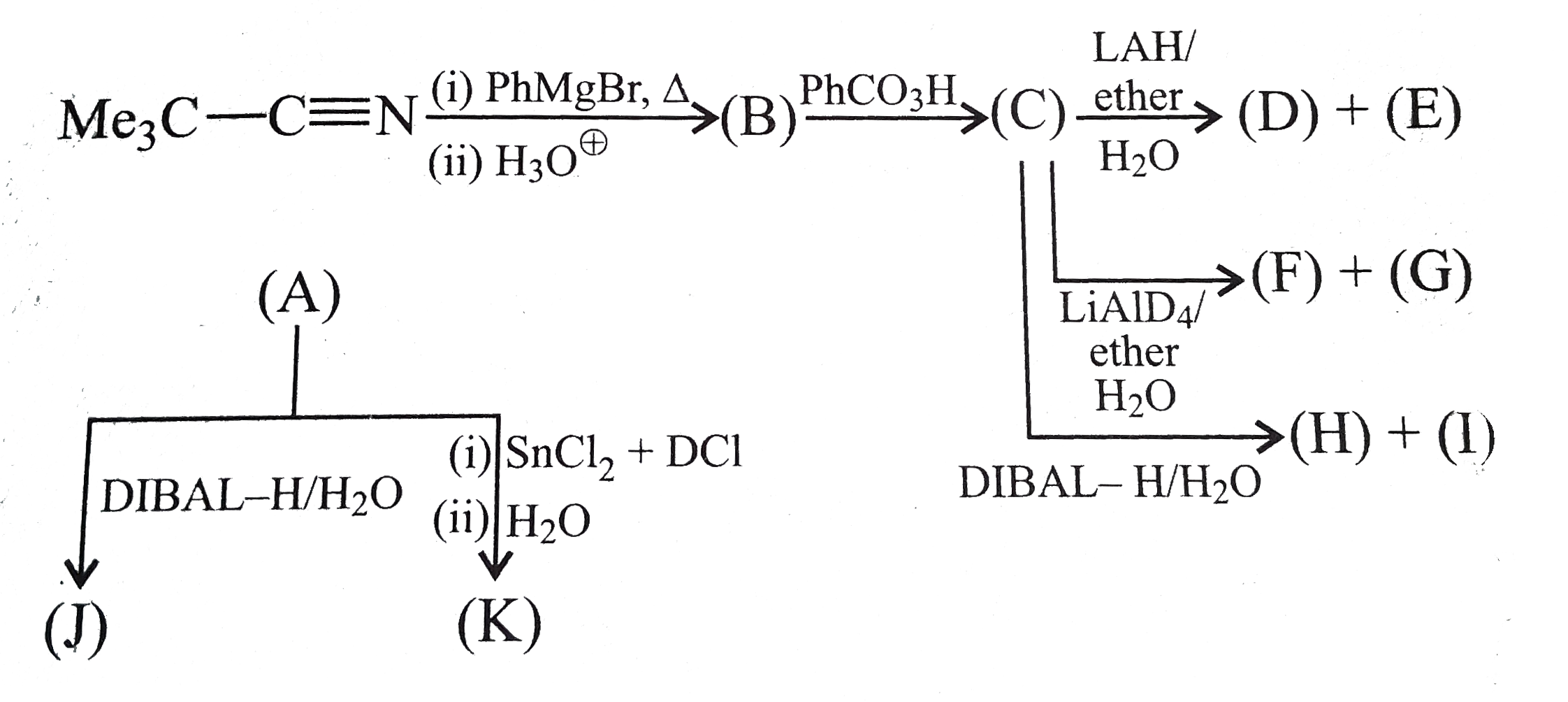
The compounds (J) is:Aa.Me3C−CHOBb.Me3C−CH2OHCc.Me3COOHDd.Me3C−CH2NH2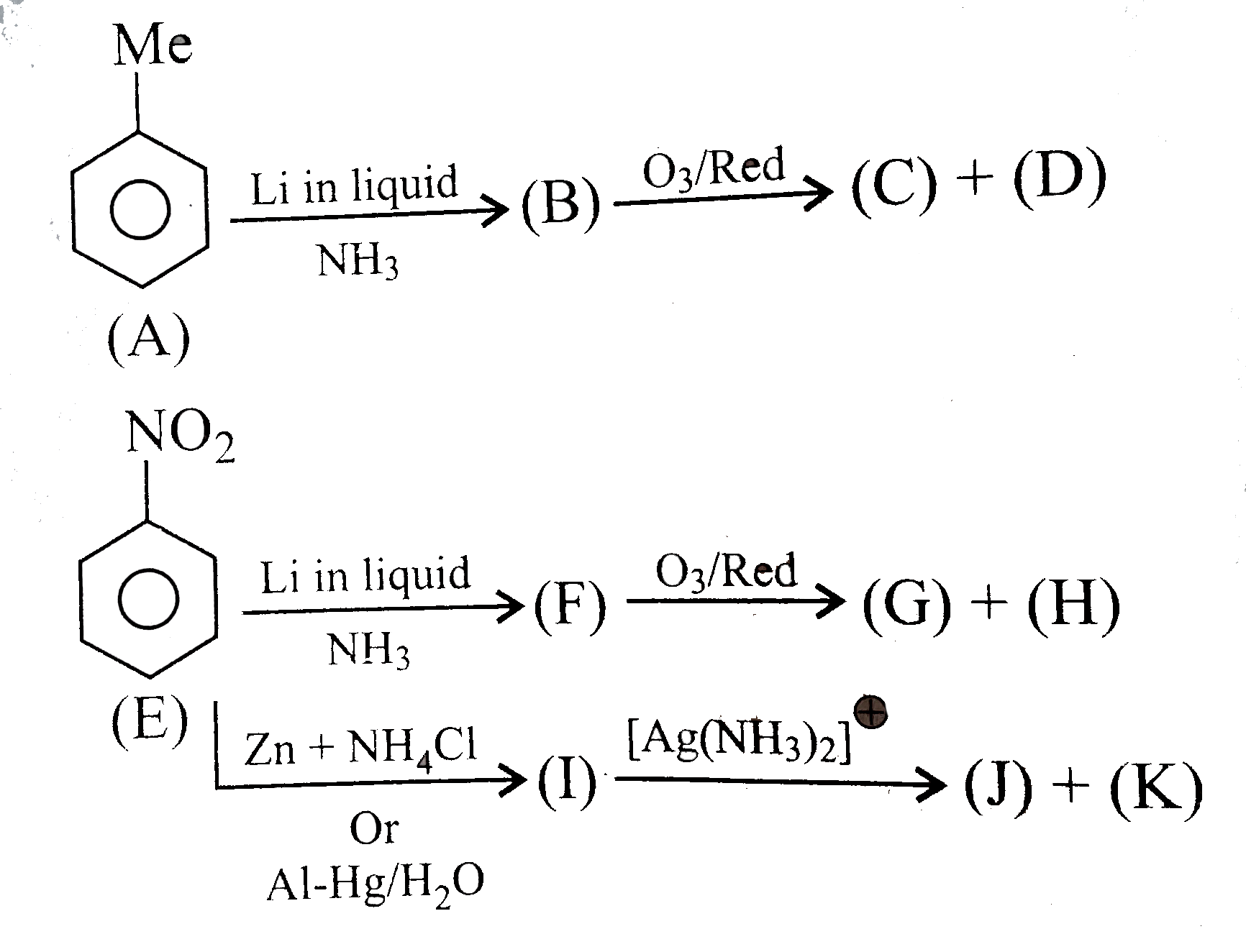
The compound (J) and (K), respectively, are:Aa. (J)Noreaction,(K)NoreactionBb. Cc.
Cc. Dd.
Dd.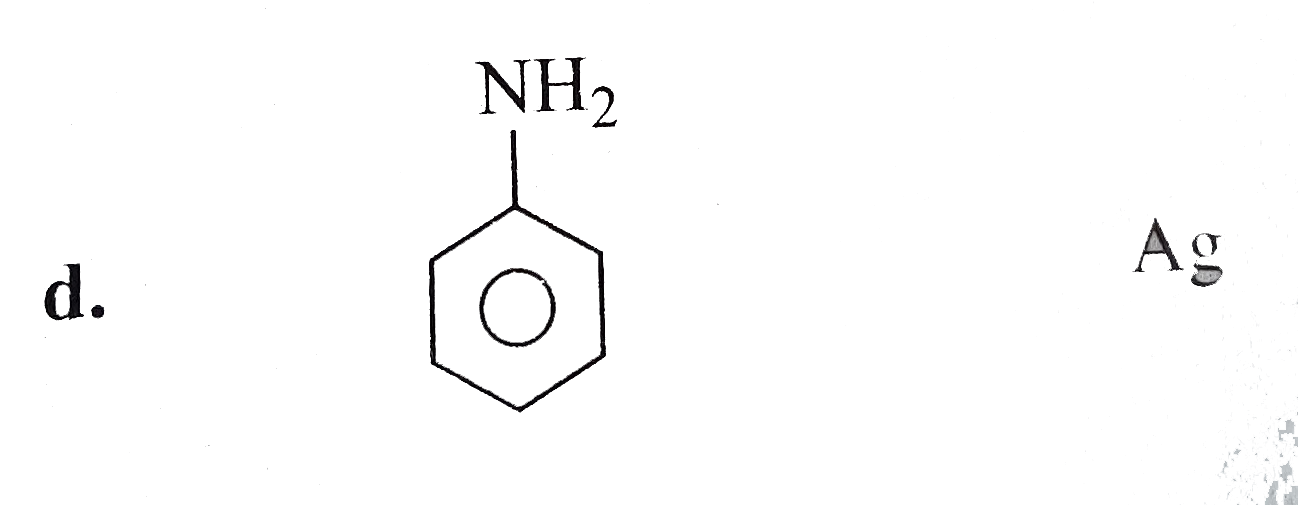
A tertiary alcohol [H] upon acid catalysed dehydration gives a product [I]. Ozonolysis of [I] leads to compounds [J] to [K]. The compound [J] upon reactions with KOH gives benzyl alcohol a compound [L] wheras [K} on reaction with KOH gives only [M]. The compund [M] has the formula.
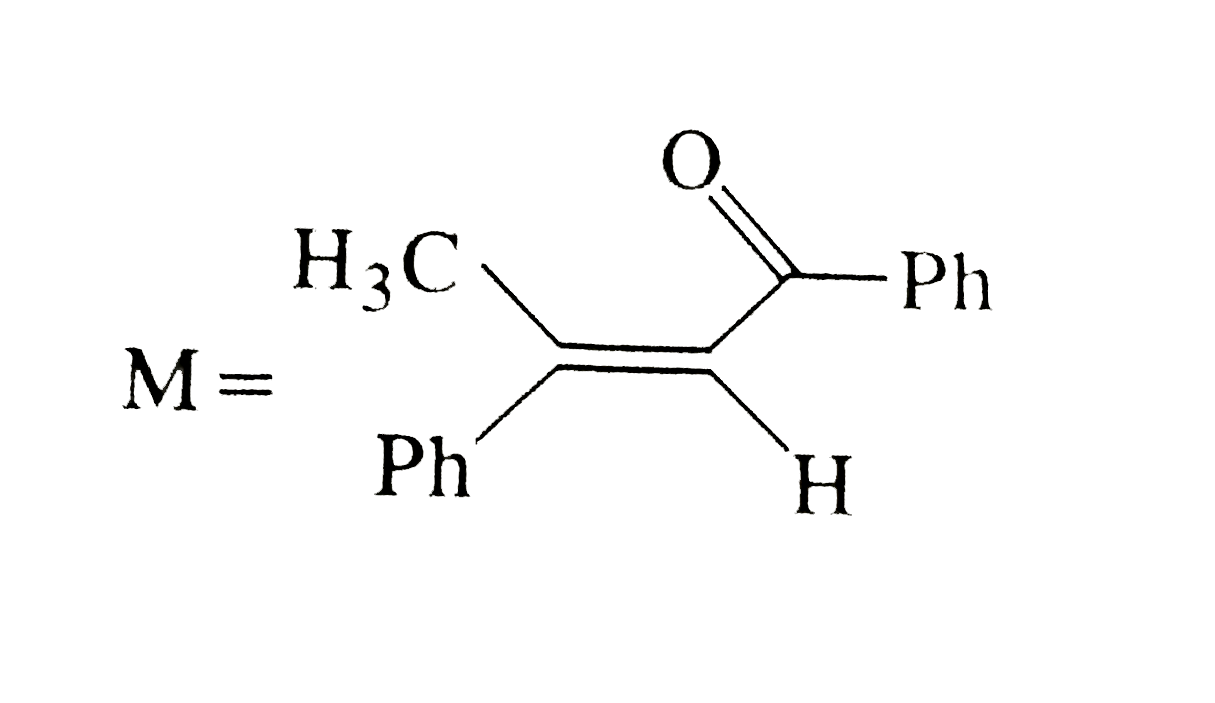
The structure of compounds [J],[K] and [L] are respectively :APhCOCH3,PhCH2COCH3 and PhCH2COO−K+BPhCHO,PhCH2CHO and PhCH2COO−K+CPhCOCH3,PhCH2CHO2 and CH3COO−K+DPhCHO,PhCOCH3 and PhCOO−K+.
If r=i+j+λ(2i+j+4k) and r.(i+2j−k)=3 are the equations of a line and a plane respectively then which of the following is true?
View SolutionA tertiary alcohol (H) upon acid-catalysed dehydration gives a product (I). Ozonolysis of (I) leads to compounds (J) and (K). Compound (J) upon reaction with KOH gives benzyl alcohol and a compound (L), whereas (K) on reaction with KOH gives only (M).
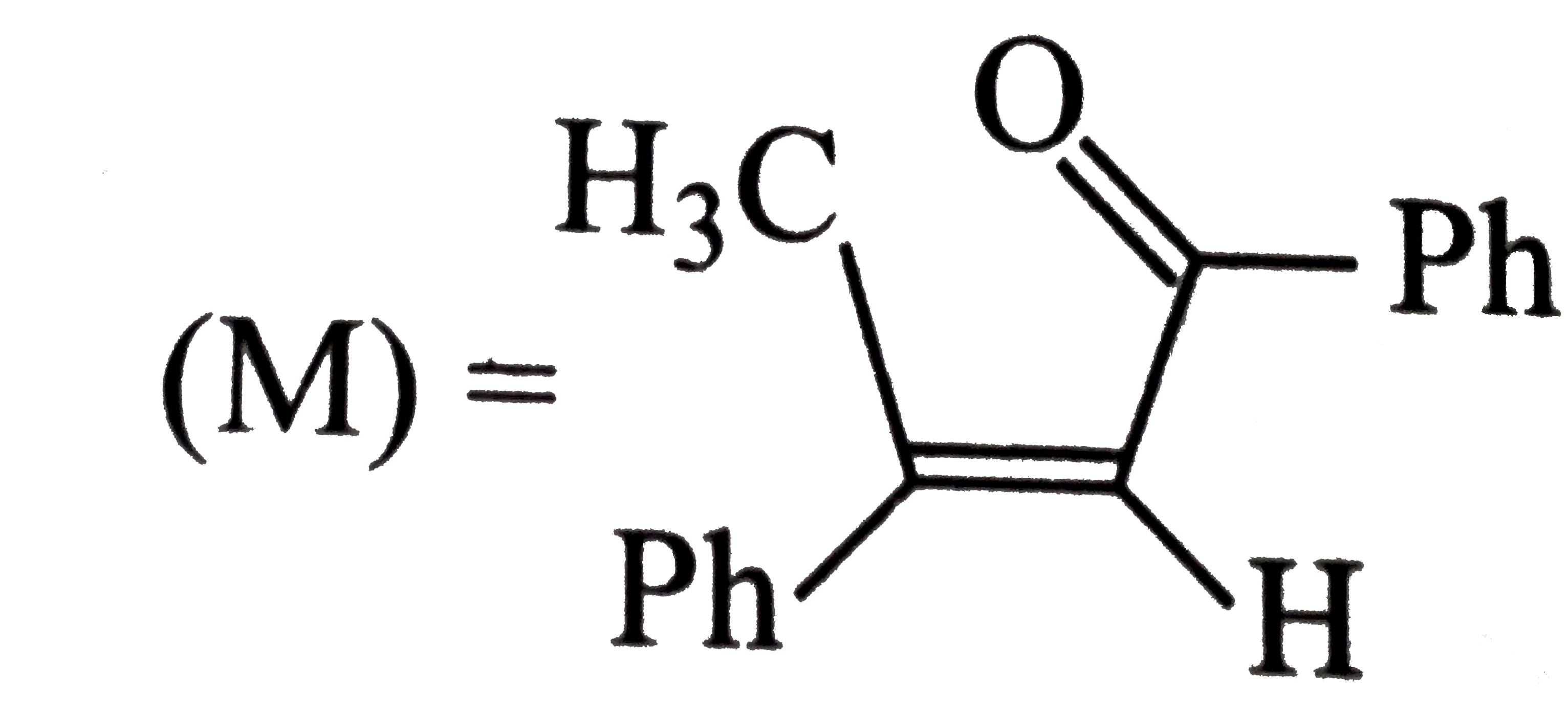
The structures of compounds (J), (K), and (L), respectively, are:
View SolutionIn the following sequence, product I,J and L are formedK represents a reagent.

The structure of compound J and K, respectively are
View SolutionA tertiary alcohol H upon acid- catalyzed dehydration gives a product I. Ozonolysis of to compounds J and K. Compound J upon reaction with KOH gives benzly alcohol and a compound L, whereas K on reaction with KOH gives only M.

The structures of compound J,K and L respectively , are
View SolutionIf the position vectors of three points A, B, C are respectively i+j+k,2i+3j−4kand7i+4j+9k, then the unit vector perpendicular to the plane of triangle ABCis
View Solution
